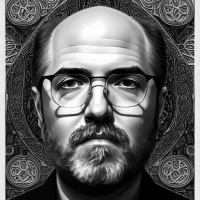How Jumanji Became the Best Video Game Movie Ever
Director Jake Kasdan reflects on the incredible success of Jumanji: Welcome to the Jungle, and more.
Jumanji: Welcome to the Jungle was not necessarily on most critics’ lists of movies likely to take the box office by storm, especially after being saddled with multiple screenwriters and three release date changes, but thanks to some smart comedy and an unabashedly fun adventure from an ensemble cast with chemistry to burn, the movie has made nearly $1 billion dollars worldwide. With the release of the DVD and Blu-ray, director Jake Kasdan spoke up about the success of the remake and what new viewers can expect.
DVD and Blu-ray viewers, of course, expect plenty of extras, and with the undeniably fun cast which includes Dwayne Johnson, Kevin Hart, Karen Gillan, and Jack Black, Kasdan assures us that they won’t be in short supply. “There’s a gag reel that’s short but I think funny and appealing. It gives you a little sense of what the guys are all like and how much fun it was to make the movie,” says Kasdan. “There’s some really good making-of pieces that they did a really nice job with and I worked with them on a little bit. And there’s one that I really like which is we did an in-depth, five or six minute piece about the rhino chase in the canyon and how we did that. I love that one.”
Some of the best scenes in Jumanji involve character moments apart from the story, such as when Bethany (Black) is learning to pee as a man or when Martha (Gillan) is learning how to flirt. It should come as no surprise that these vignettes banked on the comedic talents of the actors involved. “They were given a lot of latitude,” explains Kasdan. “There wasn’t a ton of improv; there was some. I’ve done things that have had much more… They’re brilliantly funny people, so you’d be crazy not to give them a little bit of room to make it their own and fill it out and give it its own life. And they were great at that.”
Jumanji also has a wonderful video game aesthetic, including the tattoos representing remaining lives, the repetitive dialogue of the NPCs, and the outlandish touches like villains on motorcycles in the jungle, which Kasdan says were already in the script when he came on board. “It’s true that it’s not obvious, but it just felt kind of right for some reason that we would need to expand out the palette in different ways to make it a more complete world,” says Kasdan. “These rugged, off-road motorcycles were an interesting, cool way of doing it, and it does feel like something that might exist in a game like this. But then when you see it in real life… they’re more threatening, and it was important to us that they be legitimately threatening.”
It might seem amazing that Jumanji was able to avoid the pitfalls video game adaptations often run into, but perhaps it benefits from not being a real video game at all, thus avoiding audience expectations of how the movie should look. “It was important to me that it feel really real and that even though they’re in a video game and certain video game conceits and rules apply and drive some of the drama and some of the comedy, what you’re looking at, the actual imagery and textures and feel of it, would be you’ve just been transported to a different place and now you’re really there,” says Kasdan.
That, of course, is the magic of Jumanji; it’s a game that incorporates real people into the world of its narrative rather than embodying game characters in our world. “It’s real dirt and real sky, flesh and blood people. It would not have an artificiality that I think a lot of times video game stuff has,” Kasdan explains. “And I think that was an important way of separating it from video game movies that have struggled. Also, it wasn’t a real game, and we were doing it in a way that was literally self-conscious. They’re talking about the fact that they’re in a video game all the time. So it open up a different kind of sensibility.”
Sharp-eyed viewers will spot visual tributes to the 1995 adaptation of Jumanji starring Robin Williams in Kasdan’s film as well, and the director admits that there was an effort to be true to the Chris Van Allsburg picture book as well as the earlier movie while establishing a firmly separate identity for Jumanji: Welcome to the Jungle. “Our movie’s very different from the original movie and even more different than the picture book, although the picture book is evocative of a feeling that I think infuses both movies,” Kasdan confirms. “In terms of referencing the original movie, there are a few other little things in the imagery, and we have a featurette on the Blu-ray that sort of talks about this.”
Kasdan hopes home audiences will enjoy Jumanji as much as theater audiences did and as much as he enjoyed making the film. “I really loved making a movie like this that was for broader audiences,” he says. “It’s the first thing I’ve done in a long time that wasn’t an R-rated comedy, which I also love, but it was great to change up the language, to have scenes in a really funny movie that aren’t entirely about comedy and different kinds of tension and different kinds of emotional content. I loved the experience of it.”
For those who’d like to experience Jumanji: Welcome to the Jungle for themselves, the DVD and Blu-ray of the movie with all of the extras mentioned here are on sale now. For the full audio of this interview with Jake Kasdan, subscribe to the Den of Geek Podcast, or simply listen below.
Subscribe: iTunes | Stitcher | Soundcloud
